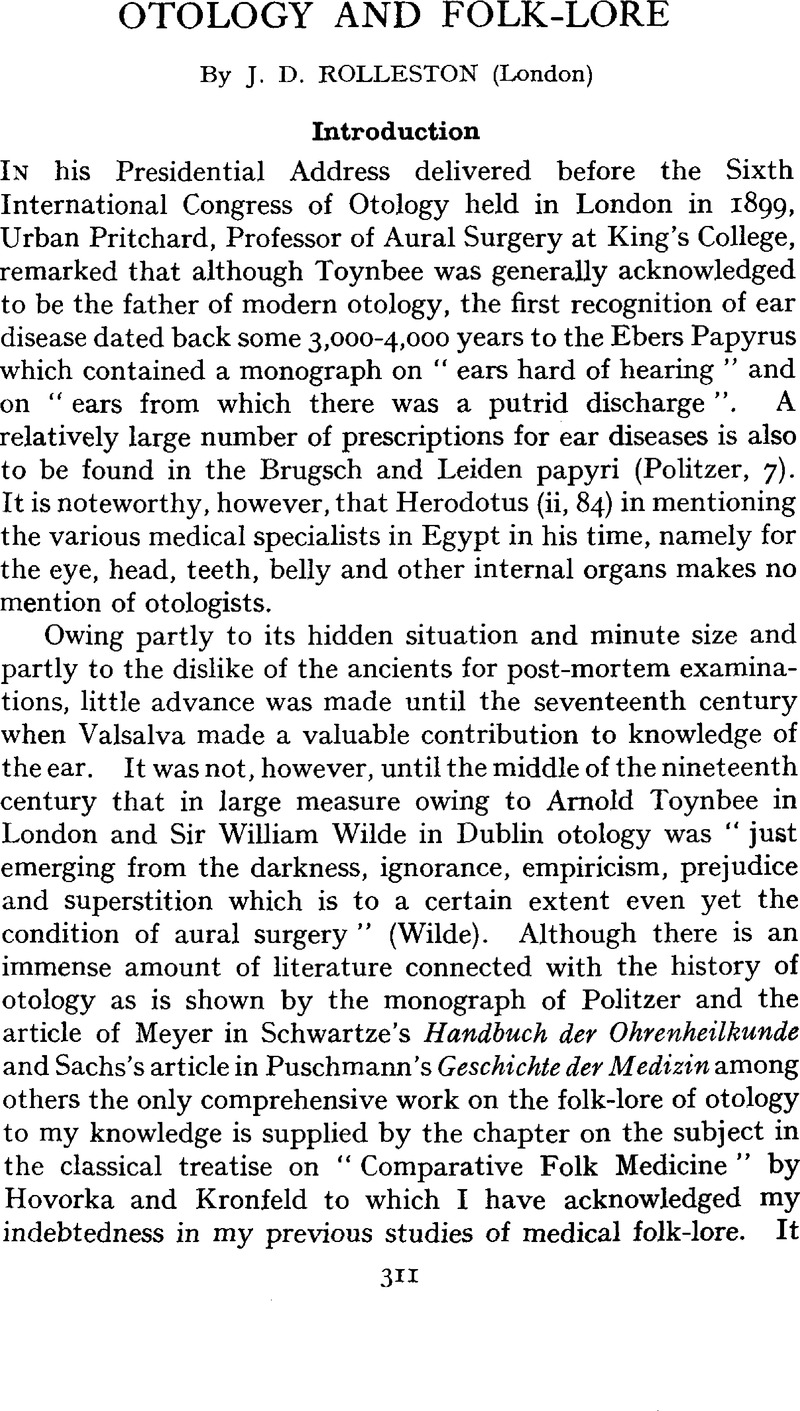No CrossRef data available.
Article contents
Otology and Folk-Lore
Published online by Cambridge University Press: 08 April 2017
Abstract
An abstract is not available for this content so a preview has been provided. Please use the Get access link above for information on how to access this content.

- Type
- Research Article
- Information
- Copyright
- Copyright © JLO (1984) Limited 1942
References
Bergen, F., “Current superstitions collected from the tradition of English-speaking people,” 1896.Google Scholar
Du Broc de, Segagne L., “Les saints patrons des corporations et protecteures spécialement invoqués dans les maladies et dans les circumstances critiques de la vie,” 1887.Google Scholar
Napier, J., “Folk-lore and superstitious beliefs in the West of Scotland within this century,” 1879, 72.Google Scholar


